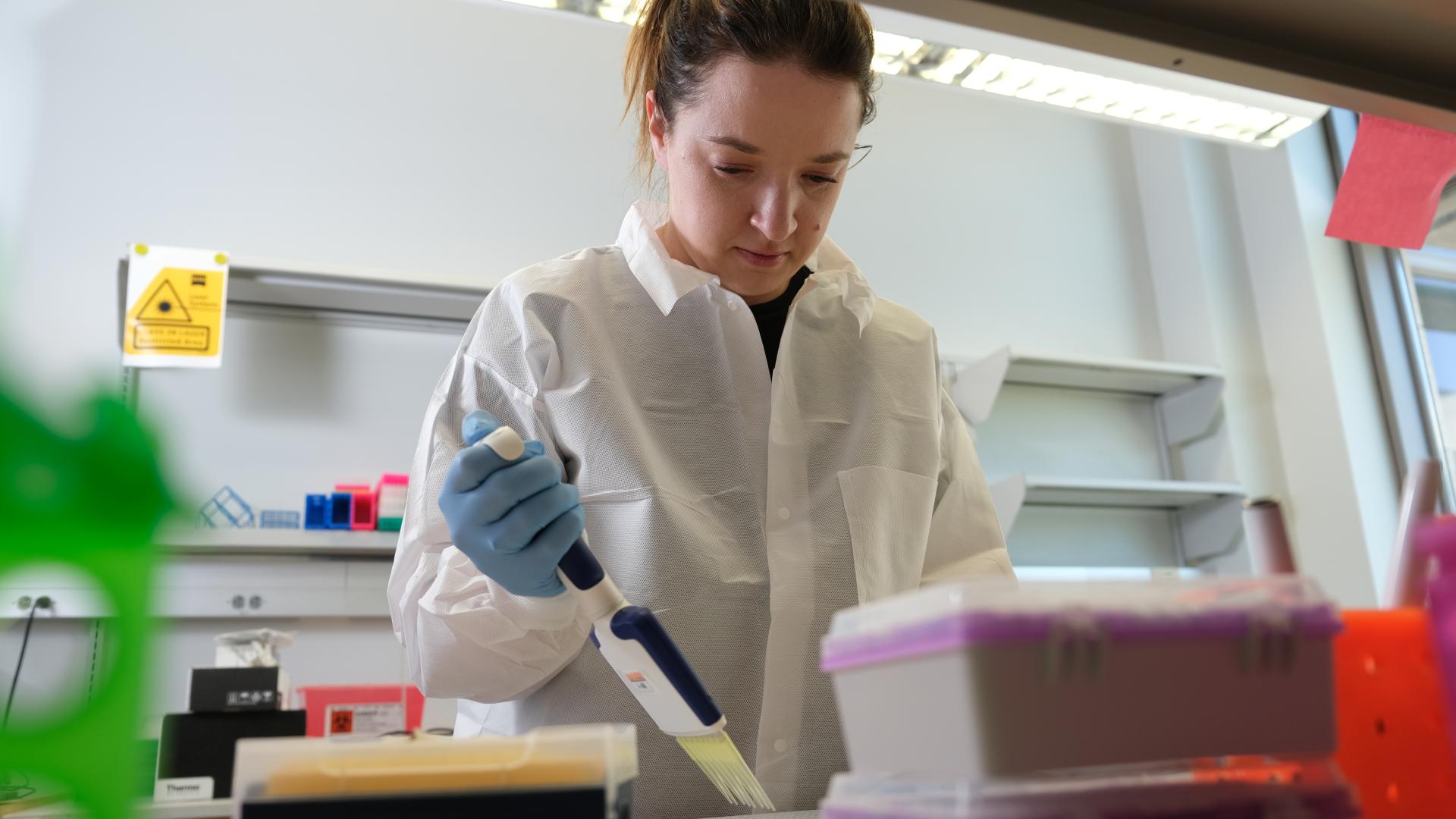
What if we could replace damaged cells in the eye with new ones, improving vision lost to diseases like age-related macular degeneration (AMD)?
As research progresses, many people with AMD are eager to know if stem cell therapy might soon offer a solution to their vision problems. Read on to learn more about the latest research findings and potential for stem cell therapy in macular degeneration.
Challenges in Replacing Cells in the Retina
In AMD, two major cell types are lost: photoreceptors and retinal pigment epithelial (RPE) cells. Photoreceptors are light-sensing nerve cells (rods and cones) in the retina. RPEs make up a cell layer that protects and nourishes the retina, removes waste products, prevents new blood vessel growth into the retinal layer, and absorbs light not absorbed by the photoreceptor cells. These actions prevent the scattering of the light and enhance clarity of vision.
RPE cells normally sit on a membrane in a single layer, where they support the photoreceptors. Without RPE cells, photoreceptors die. This is the sequence of events in at least some patients with geographic atrophy, a form of advanced dry AMD.
Stem cells can potentially develop into many different cell types, including retinal cells like RPEs and photoreceptors. These new cells can then be injected into the eye to replace cells that have died from AMD. Stem cells can be induced—or reprogrammed—to become RPE cells relatively easily, and then injected into their proper location.
The challenge is that often these free-floating cells form clumps rather than a single layer. Recent studies have grown stem cell-derived RPE cells as a single layer on a very thin membrane, then implanted this membrane under the retina in a few individuals.
It is more difficult to transplant photoreceptors, however. While stem cells can be reprogrammed to form photoreceptors, it is harder to “convince” them to become photoreceptors than RPE cells. Also, once the new photoreceptors are placed inside the retina, they must create connections with other retinal neurons to communicate.
While this normally occurs in the developing retina, it is much harder to make this happen in an adult retina. Animal studies suggest that it can be accomplished, but so far this happens mainly when the donor cells and recipient retinas are at early developmental stages. Combinations of RPE cells with photoreceptors can also be generated from stem cells and could also be considered.
Progress in Stem Cell Research
Over the past few years, results of several small studies showed evidence that transplanted stem cells can survive for at least two years in their new environment. Serious, irreversible side effects are infrequent, and there is a hint that the vision may have improved.
One product, called OpRegen (RG6501), uses stem cells induced to become RPE cells. These free-floating RPE cells are then injected into the RPE layer under the photoreceptors. In a Phase I/IIa trial, among 12 patients, they were able to read an average increase of 7.6 more eye chart letters one year after the transplant compared to before the transplant. During the same time period, untreated eyes had, on average, only a 1.3 letter increase in visual acuity. There was also better preservation of the RPE and photoreceptor layers in the treated group based on photographs taken with a special camera called optical coherence tomography (OCT). This product is now in Phase II trials. Another similar product, called ASP7317, is in Phase 1b trials and results are expected in 2025.
RPE cells derived from a person’s own stem cells and supported on a thin membrane are also in early clinical trials. A product called CPCB-RPE1 has been tested in 16 patients in a Phase I/IIa trial. Patients receiving the transplant were more likely to gain more than five letters on an eye chart than untreated controls. While these results represent a promising start, more clinical trials and fine-tuning of techniques are needed.
Summary
There is much excitement about the potential for stem cell transplantation in AMD, and this approach has a reasonable chance of helping patients with wet AMD or advanced dry AMD (geographic atrophy) in the future. In the meantime, studies in animal models and additional human clinical trials will continue to make meaningful progress toward next-generation treatments for AMD.
Important Clinical Trial Information
People who might be interested in enrolling in a cell transplantation clinical trial should ask their ophthalmologist about their eligibility and the current availability of trials. Under no circumstances should patients have cell transplantation or injection outside the protections of a clinical trial registered on clinicaltrials.gov or Antidote. Recently, stem cell injections into the eye, offered by a clinic but not part of a registered clinical trial, resulted in catastrophic vision loss due to the lack of proper regulatory approval. For more information on this issue, visit here.
About BrightFocus Foundation
BrightFocus Foundation is a premier global nonprofit funder of research to defeat Alzheimer’s, macular degeneration, and glaucoma. Through its flagship research programs — Alzheimer’s Disease Research, Macular Degeneration Research, and National Glaucoma Research— the Foundation has awarded nearly $300 million in groundbreaking research funding over the past 51 years and shares the latest research findings, expert information, and resources to empower the millions impacted by these devastating diseases. Learn more at brightfocus.org.
Disclaimer: The information provided here is a public service of BrightFocus Foundation and is not intended to constitute medical advice. Please consult your physician for personalized medical, dietary, and/or exercise advice. Any medications or supplements should only be taken under medical supervision. BrightFocus Foundation does not endorse any medical products or therapies.
- Dry AMD
- Treatments
- Wet AMD










